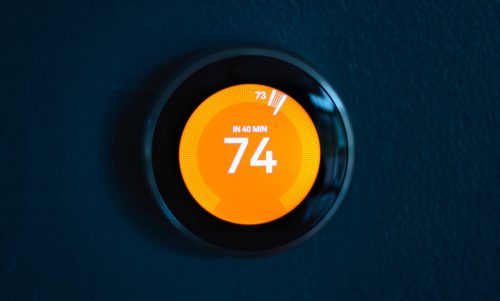Inflation has seemingly peaked, but that doesn’t mean prices have started to go down. Nowhere is this more apparent than energy, at least now that winter’s here. It’s led many to try and find the golden exit from wallet-busting home heating bills: different heating sources, different homes, you name it. However, all this has really done is further highlight the value a good control or energy management system can provide, and it should be all too easy to start that conversation with the introduction of the humble smart thermostat.
Now, I get it: telling someone to sell a thermostat during the winter might be as insightful as telling someone water is wet. Smart thermostats have always been popular, maybe not the most popular, but popular enough to be many people’s first experience with a smart device.
But if you look at any of the recent energy articles that have been featured on CE Pro or talked about elsewhere, you’ll see how hyper-aware consumers are about their energy spending now, mainly due to inflation mixed with instability in utility services. Experts have compared the current situation to how COVID set fire to the curiosity around indoor air quality (and now look at where we are with that). With that in consideration, this winter’s heating bills will only stoke those flames. In a way, they already are.
Home Heating Costs Have Skyrocketed in the Past Year
According to the National Energy Assistance Directors Association, energy bills on average are expected to increase about 17% this year, but that’s an average. Depending on what type of heating and where one lives, it could be much, much more. For instance, electric heating in Massachusetts? Some people are seeing a 64% jump in home heating costs, according to National Grid, one of the dominant utility companies within the state.
Looking at natural gas costs, the Energy Information Administration (EIA), projects a steep 28% increase in heating expenditures. Customers in the Midwest are expected to have an even worse go of it, with a 33% increase in natural gas heating bills expected for this year. By far, Oklahoma will be the most expensive state for those heating with natural gas, with the average monthly bill this winter projected to be over $300.
As a reminder: natural gas is one of the most efficient forms of home heating (in terms of cost) outside of a geothermal heat pump in the US. That means, for everyone else on heating oil, electricity or wood pellets, it’s likely heating costs are going to be far more expensive.
I mentioned homeowners were looking for better heating methods this winter. Realistically, most homeowners are locked into whatever heating option they have and getting out of it is effectively like paying an expensive termination fee. However, that hasn’t stopped people from using wood stoves and fireplaces as a quick, supplementary fix to winter heating woes.
And Homeowners Are Hunting Down Solutions
When you look at it, people are clearly concerned enough about heating bills to be making a mad dash for cheaper, less efficient (and even potentially dangerous) methods to save some money. At the same time, people are concerned enough about energy usage to be manually eyeballing the meter to understand how much energy they use regularly and where.
Smart thermostats have always had the answer to both those issues as their main appeal. It’s just now those issues are even more relevant for homeowners, to the point where people are considering revamping their entire heating system just to save. For homeowners, it just makes sense as a cost-effective method to mitigate heating expenditures.
Meanwhile, for the integrator, it can either serve as a conversation starter, or a value add to a larger project–maybe even both. As an entry point, it can give homeowners a taste of scene-setting and automation and can be paired with lighting, shading, sensors and even air purification to create a more comfortable environment that can extend well past the winter months for less monthly costs.
For clients where heating may be a core concern, something like automated shading, combined with a smart thermostat can be used to improve a home’s thermal comfort. And, at the end of all of it, the smart thermostat can still be used to lead into greater discussions about smart energy. What is the client’s energy goals? How much insight do they want into their energy spending?
Selling smart thermostats this winter can potentially provide clients with a source of relief from their home heating bills while also offering opportunities for greater conversations surrounding smart home automation and energy management in the home.







